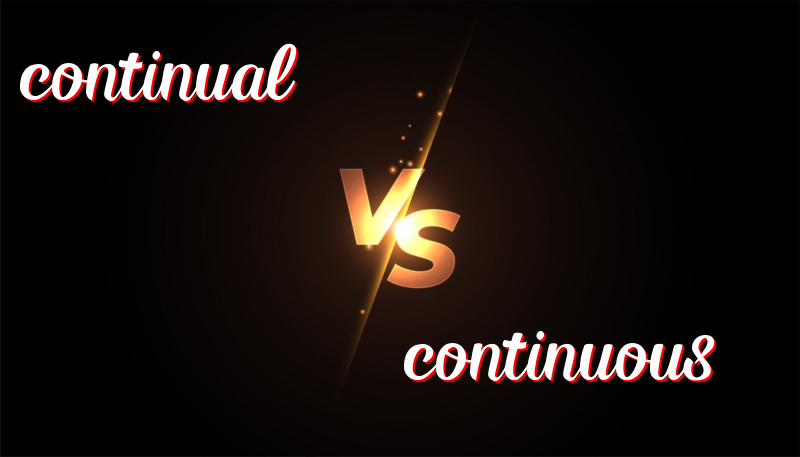Understanding Continual and Continuous
Continual vs. Continuous
Understanding the difference between “continual” and “continuous” can help your English communication. Let’s learn about these two words.
History of the Words
Both words come from the Latin word continuus, meaning “unbroken” or “without pause.” Over time, the meanings of “continual” and “continuous” developed to describe different actions or states.
How to Use Them
Continual: This word is used when something happens again and again, with breaks or pauses in between.
- The dog barked continually throughout the night.
- Continual rain made it hard to go outside.
- She faced continual challenges at her new job.
- There was a continual stream of visitors at the art show.
- He made continual efforts to improve his grades.
Continuous: This word describes something that happens without stopping, with no breaks or pauses.
- The river flowed continuously through the valley.
- She felt continuous pain after the injury.
- The continuous hum of the fan helped him sleep.
- The clock ticks continuously in a quiet room.
- The continuous line on the map marks the border.
Trick to Remember the Difference
Think of “continual” as an action or situation that starts and stops many times. In contrast, “continuous” keeps going without stopping.
Summary of Usage
Use continual for events that repeat with pauses: “continual interruptions.” Use continuous for things that happen without interruptions: “continuous flow of water.”
Knowing these differences makes your English more clear and precise!

Leave a Reply
You must be logged in to post a comment.